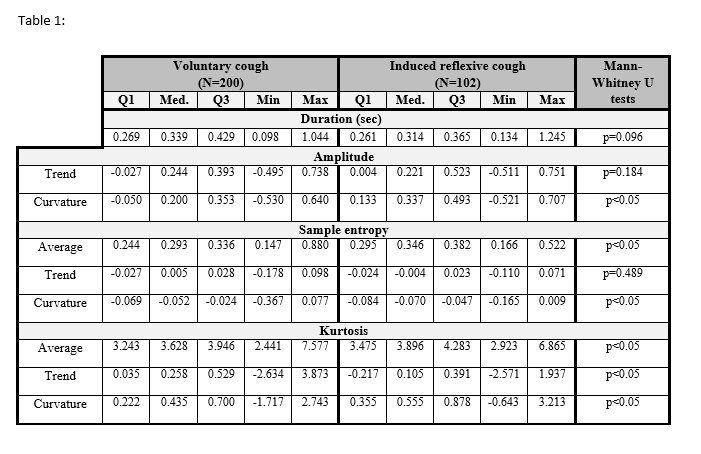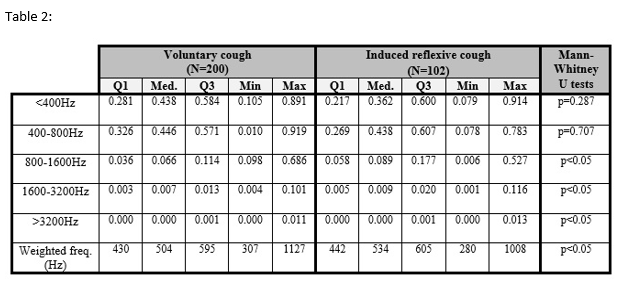Acoustic analysis of voluntary and reflexive coughs in healthy subjects
Sofiana Mootassim-Billah,
Belgium
PO-1121
Abstract
Acoustic analysis of voluntary and reflexive coughs in healthy subjects
Authors: Sofiana Mootassim-Billah1
1Jules Bordet, Radiation-Oncology, Brussels, Belgium
Show Affiliations
Hide Affiliations
Purpose or Objective
Late radiation-associated dysphagia (RAD) is
defined as impaired swallowing efficiency/safety following chemoradiotherapy in
head and neck cancer patients. In a RAD framework, the risk of impaired
coughing may lead to lung aspiration and fatal lung infection. Although
cough efficacy is a predictor of aspiration, cough investigation is minimal in
patients with RAD. Acoustically, a cough sound is a superposition of
turbulence noise – presumably due to the air jet passing through the glottis –
and lower frequency noise – presumably generated by the airflow modulated by
the vibrations of the vocal folds, false vocal cords and aryepiglottic folds.
Because cough is a transient signal, existing software for speech analysis are
not appropriate. The goal of our
project is to develop an assessment method using acoustic features related to
voluntary and reflexive coughs as biomarkers of aspiration in patients with RAD. As our methods are new, this study first focuses on healthy
subjects in order to obtain reference values.
Material and Methods
Forty healthy subjects produced voluntary and
(induced) reflexive coughs, recorded using a throat microphone. Cough
samples were analyzed with a software under development. Automatic final
segmentation enables to measure the cough duration. A first method of analysis
includes temporal features: the amplitude contour, the sample entropy and
the kurtosis. These features report respectively the strength, the
unpredictability (turbulence noise due to the air jet) and the impulsive
quality (burst) of the signal. A second method of analysis consists of a
spectral decomposition of the relative cough signal energy into several
frequency bands (0-400Hz, 400-800Hz, 800-1600Hz, 1600Hz-3200Hz,
>3200Hz).
Results
Results show an average duration of 0.3 sec
for voluntary and reflexive coughs. The temporal analysis (Table 1)
reports that reflexive coughs exhibit higher feature values for the
curvature of the amplitude contour and the average and curvature of the kurtosis
compared to voluntary coughs. This suggests overall higher impulsivity and
higher contrast of impulsivity between onset, sustain and offset in reflexive
coughs. The average and curvature of the sample entropy are also higher in
reflexive coughs, suggesting overall higher flow noise and higher contrast of
flow noise between onset, sustain and offset. Overall higher flow noise is
confirmed by the larger weighted frequency and by the higher spectral features
(Table 2) in frequency bands >800 Hz. Voluntary and reflexive coughs show
comparable energy in frequencies <800Hz, suggesting comparably intense
mechanical vibrations of the glottal structures.


Conclusion
The acoustic features enable to discover
interpretable differences between voluntary and reflexive coughs, which
demonstrates the relevance of the features. Also, the contrast between
voluntary and reflexive coughs suggests that both should be considered in
future work oriented towards discovering biomarkers of aspiration in patients
with RAD.